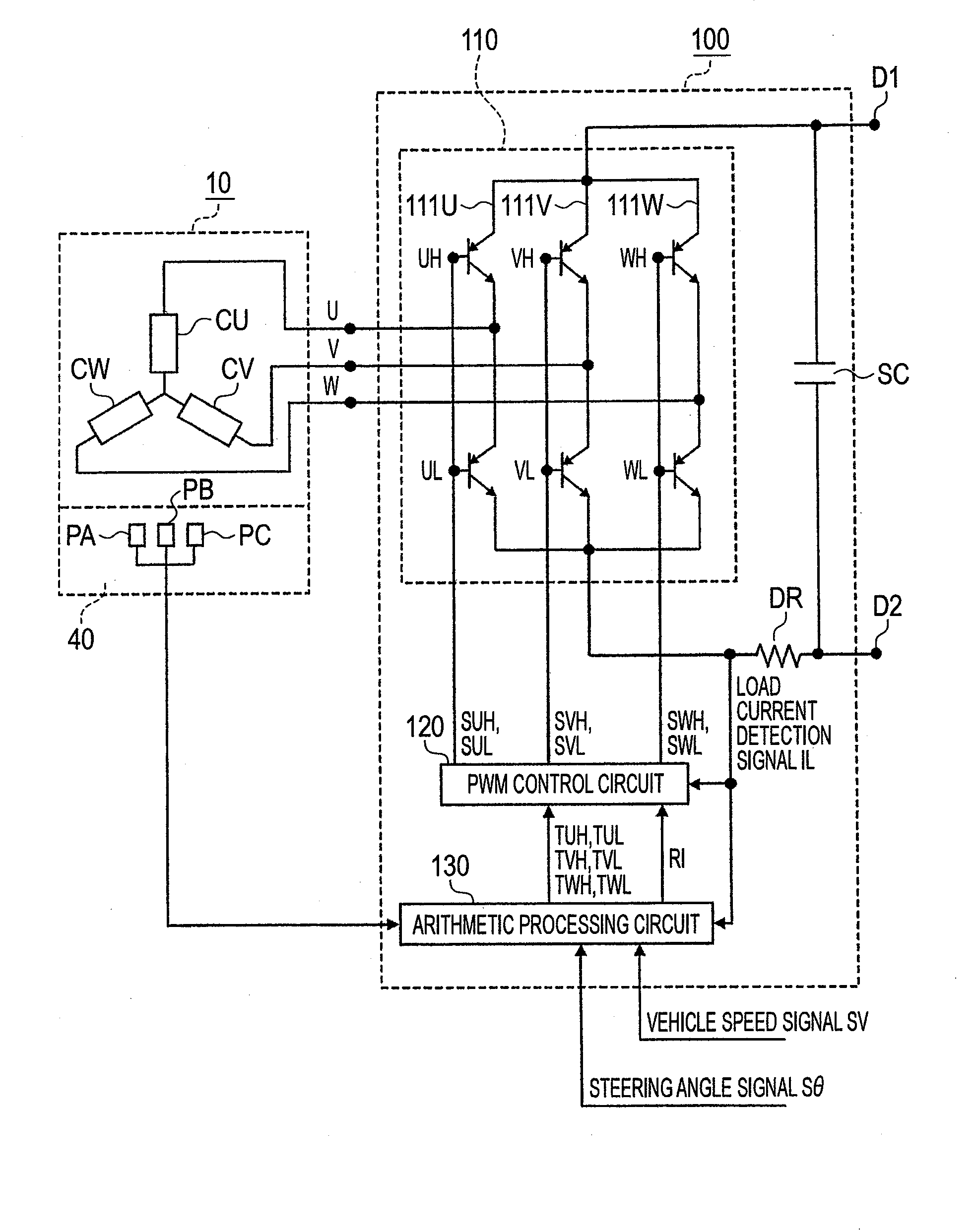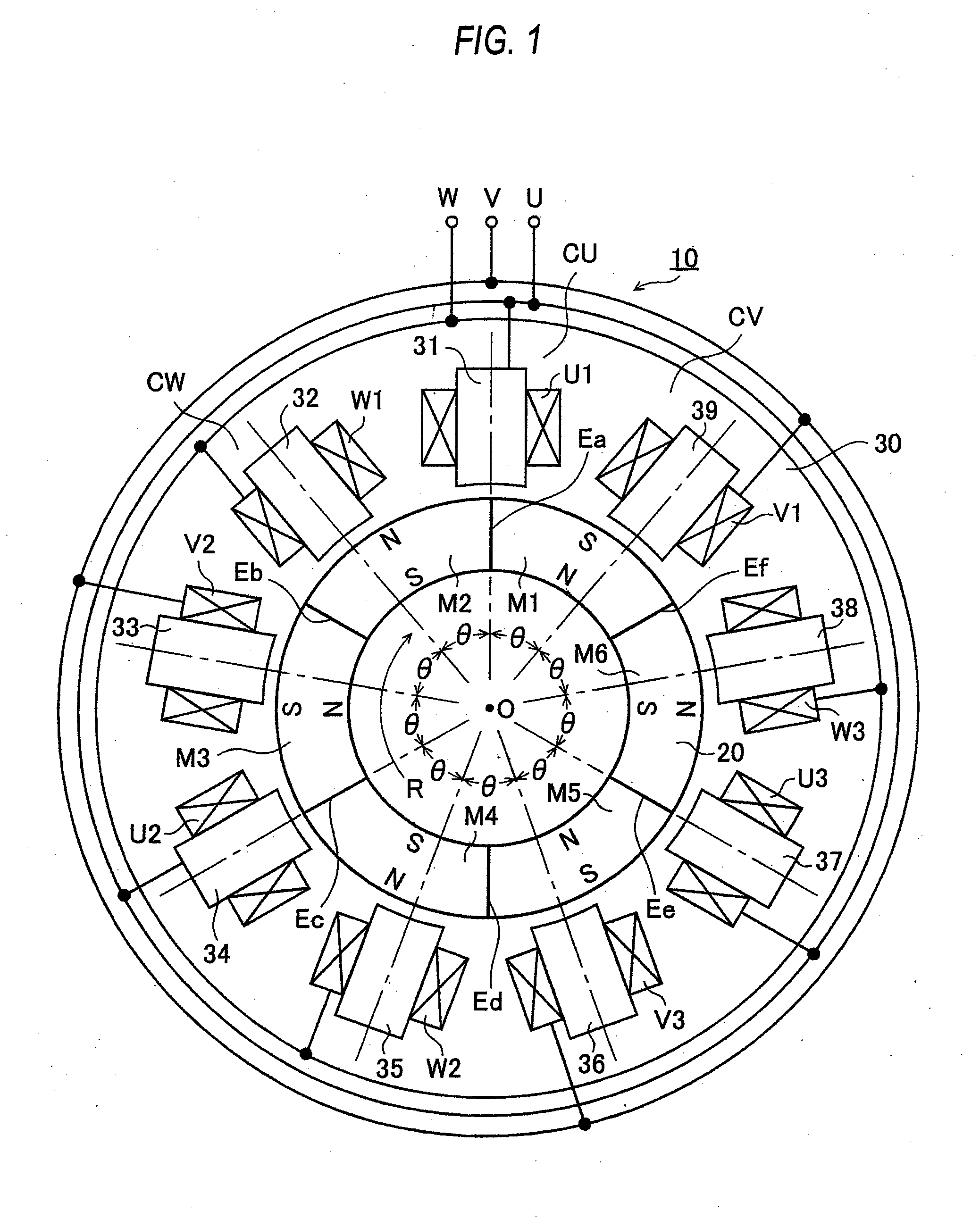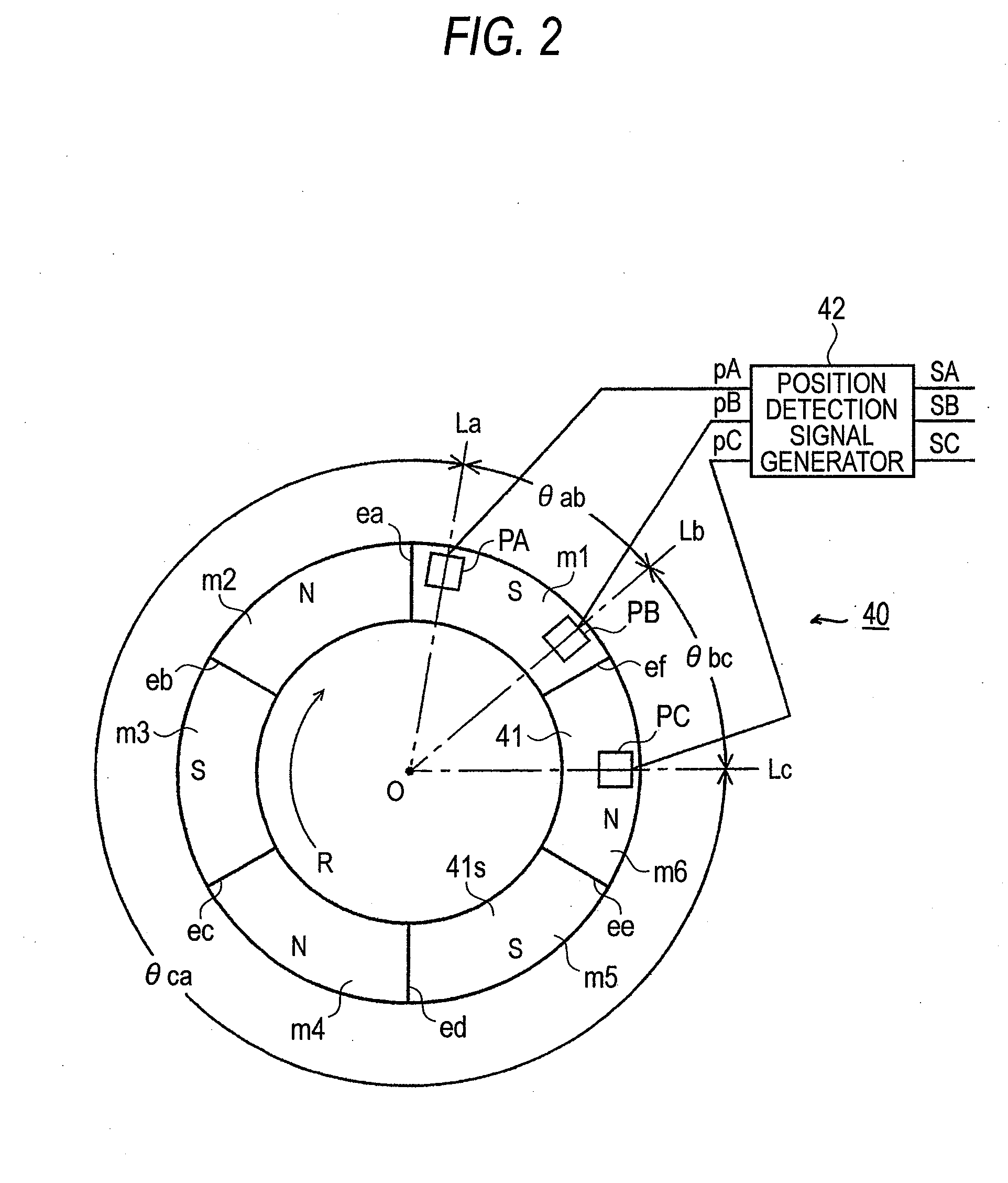Control device for three-phase brushless motor
- Summary
- Abstract
- Description
- Claims
- Application Information
AI Technical Summary
Benefits of technology
Problems solved by technology
Method used
Image
Examples
embodiment 1
[0032]FIG. 1 is a diagram for explaining the configuration of a three-phase brushless motor in Embodiment 1 of a control apparatus for the three-phase brushless motor according to this invention. FIG. 2 is a diagram for explaining the configuration of a position detection signal generation device in the three-phase brushless motor in Embodiment 1. FIG. 3 is an electric circuit diagram showing the control apparatus for the three-phase brushless motor in Embodiment 1. FIG. 4 is a block diagram showing the internal configuration of an arithmetic processing circuit in the control apparatus for the three-phase brushless motor in Embodiment 1. FIG. 5 is a timing chart for explaining the operation of Embodiment 1.
[0033]The control apparatus for the three-phase brushless motor in Embodiment 1 includes the three-phase brushless motor 10, and a control circuit 100 therefor. The three-phase brushless motor 10 is utilized for, for example, a vehicular power steering control apparatus. Concretel...
embodiment 2
[0095]Embodiment 1 has been so configured that the time-interval-calculation-mode setting means 135 gives the time interval calculation means 133 the time interval calculation mode command TQ of the section number Q=2 on the basis of the external command TO, and that the time interval calculation means 133 calculates each of the time intervals t21-t26, between the two position detection signals px and py lying at both the ends of the two continuous sections q. In Embodiment 2, the time-interval-calculation-mode setting means 135 gives the time interval calculation means 133 a time interval calculation mode command TQ of section number Q=3 on the basis of the external command TO, and the time interval calculation means 133 calculates each of time intervals t31-t36, between two position detection signals px and py lying at both the ends of three continuous sections q. The other configuration of Embodiment 2 is the same as in Embodiment 1.
[0096]FIG. 9 is a timing chart for explaining t...
embodiment 3
[0112]In Embodiment 3 here, the time-interval-calculation-mode setting means 135 gives the time interval calculation means 133 a time interval calculation mode command TQ of section number Q=4 on the basis of the external command TO, and the time interval calculation means 133 calculates each of time intervals t41-t46, between two position detection signals px and py lying at both the ends of four continuous sections q. The other configuration of Embodiment 3 is the same as in Embodiment 1.
[0113]FIG. 10 is a timing chart for explaining the operation of Embodiment 3. Rotational positions P1-P18 on the axis of abscissas in FIG. 10 are the same as in FIG. 5, and respective signal waveforms shown at (a)-(j) in FIG. 10 are also the same as in FIG. 5. The time interval calculation means 133 successively calculates the time intervals t41-t46 appended at (a), (b) and (c) in FIG. 10. These time intervals t41-t46 will be concretely described.
[0114]First, the time intervals t41 are respectivel...
PUM
 Login to View More
Login to View More Abstract
Description
Claims
Application Information
 Login to View More
Login to View More - R&D
- Intellectual Property
- Life Sciences
- Materials
- Tech Scout
- Unparalleled Data Quality
- Higher Quality Content
- 60% Fewer Hallucinations
Browse by: Latest US Patents, China's latest patents, Technical Efficacy Thesaurus, Application Domain, Technology Topic, Popular Technical Reports.
© 2025 PatSnap. All rights reserved.Legal|Privacy policy|Modern Slavery Act Transparency Statement|Sitemap|About US| Contact US: help@patsnap.com



